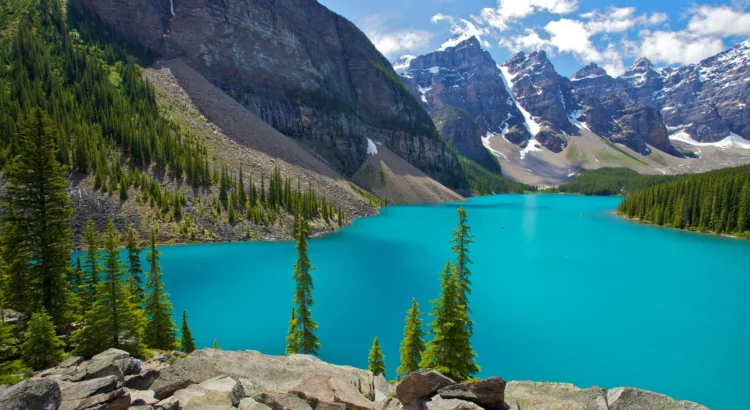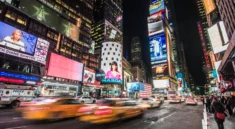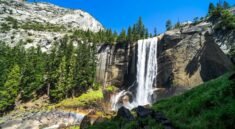
The United States is often described as a land of contrasts—where untouched wilderness collides with architectural marvels, where remote canyons coexist with sprawling cities, and where dozens of cultures, traditions, and identities form a vibrant, living mosaic. Stretching across six time zones, the country offers a near-endless variety of landscapes and lifestyles. From the quiet serenity of its national parks to the energy and diversity of its multicultural metropolises, the U.S. is a nation shaped by nature, history, immigration, and innovation.
To explore the U.S. is to journey across continents within a single country—one day you may be hiking through a glacier-carved valley, and the next, savoring street food in a bustling Chinatown or listening to jazz in a neon-lit city. This is a destination where geography and humanity intersect in fascinating ways, offering every traveler something unforgettable.
America’s Natural Heritage: The National Parks
Few countries in the world protect their natural wonders as thoroughly as the United States. With 63 national parks and over 400 protected sites under the National Park Service, the U.S. is a sanctuary for some of Earth’s most breathtaking and diverse landscapes.
Yosemite National Park, California
Famed for its towering granite cliffs, ancient sequoias, and thundering waterfalls, Yosemite is a cathedral of natural beauty. Hike up to Glacier Point for sweeping views of Half Dome and El Capitan, or wander through Mariposa Grove, home to some of the oldest living trees on the planet. The park’s dramatic terrain has inspired artists and adventurers alike for centuries.
Grand Canyon National Park, Arizona
A geological masterpiece carved by the Colorado River, the Grand Canyon stretches 277 miles and reaches depths of over a mile. The layered red rocks tell stories of millions of years of Earth’s history. Whether you’re gazing from the South Rim or rafting through its winding inner corridors, the canyon is an awe-inspiring reminder of nature’s power and time’s passage.
Great Smoky Mountains National Park, Tennessee/North Carolina
Known for its mist-covered peaks and biodiverse forests, the Smokies are among the most visited national parks in the U.S. Wildflowers bloom in abundance, black bears roam freely, and scenic drives such as Clingmans Dome Road offer views that stretch into the horizon.
Yellowstone and Beyond
The country’s first national park, Yellowstone, boasts geysers, hot springs, and abundant wildlife like bison and wolves. Neighboring Grand Teton National Park adds rugged peaks and alpine lakes, perfect for mountaineering or quiet reflection. Meanwhile, parks like Zion, Bryce Canyon, Everglades, and Denali offer their own unique ecosystems and experiences—from deserts and swamps to icy wilderness.
Urban Frontiers: The Multicultural Cities of America
Just as majestic as its natural landscapes are the cities of the United States—places where cultures converge, art flourishes, and stories unfold across generations. These metropolises are living museums of migration, innovation, and expression.
New York City: The World in One Place
There’s no city quite like New York. With over 8 million residents representing nearly every country on Earth, NYC is a microcosm of global culture. Walk through Queens, and you might hear 150 languages in a day. Visit Harlem for African-American heritage and jazz. Wander Chinatown, Little Italy, or Koreatown for authentic food and cultural traditions. Each borough tells its own story.
The city’s skyline is a symbol of ambition—skyscrapers like One World Trade Center and the Empire State Building pierce the clouds, while Central Park offers green respite in the heart of Manhattan. Museums like the Metropolitan Museum of Art, MoMA, and The American Museum of Natural History showcase global treasures. And Broadway, of course, brings stories to life in dazzling fashion.
Los Angeles: Dreams, Diversity, and Creativity
On the opposite coast lies Los Angeles, a sprawling metropolis where creativity reigns. Known as the heart of the film and entertainment industry, LA is more than just Hollywood. It’s also home to vibrant neighborhoods like Little Tokyo, Koreatown, and Boyle Heights, as well as world-class institutions like the Getty Center, LACMA, and the Walt Disney Concert Hall.
With the Pacific Ocean on one side and desert mountains on the other, LA’s geography mirrors its cultural richness. From Venice Beach’s quirky boardwalk to the street tacos of East LA, the city pulses with energy and reinvention.
Chicago: The Heartbeat of the Midwest
Rising from the shores of Lake Michigan, Chicago is a city of bold architecture, deep-rooted jazz and blues, and neighborhoods with distinct cultural identities. Greek Town, Pilsen (Mexican heritage), and Devon Avenue (South Asian) all thrive within its urban grid.
The skyline, shaped by legends like Frank Lloyd Wright and Ludwig Mies van der Rohe, reflects the city’s industrial past and creative future. The Art Institute of Chicago, Millennium Park, and world-renowned cuisine (deep-dish pizza, anyone?) make it a must-visit for travelers craving both cultural and culinary adventures.
San Francisco: Innovation Meets Identity
Home to tech giants and counterculture alike, San Francisco is a city of innovation, activism, and diversity. Its historic Chinatown is the oldest in North America, while the Mission District celebrates Latin American heritage through vibrant murals and community events.
Iconic sights like the Golden Gate Bridge, Alcatraz Island, and the winding streets of Lombard Street draw millions of visitors. The nearby Silicon Valley fuels global technology, while progressive values and artistic expression define the city’s soul.
New Orleans: A Celebration of Creole Culture
In the Deep South, New Orleans stands apart. Known for its French Quarter, soulful jazz, and legendary Mardi Gras, the city blends French, Spanish, African, and Caribbean influences into a unique Creole culture.
Food here is an art form—gumbo, jambalaya, and beignets are staples. The streets echo with brass bands, and historic homes are adorned with intricate ironwork and lush gardens. It’s a place where time slows down, and traditions run deep.
A Tapestry of Cultures and Ideas
The United States is fundamentally a nation of immigrants. From Indigenous peoples who first walked its land to newcomers who arrive every day seeking opportunity, the country’s identity is built on a patchwork of traditions, languages, and philosophies.
This multiculturalism is not just confined to big cities. Towns like Dearborn, Michigan (home to a large Arab-American community), El Paso, Texas (with deep Mexican roots), or Honolulu, Hawaii (a Pacific crossroads of Asian, Polynesian, and American cultures) all add layers to the American experience.
Religious diversity is also a defining feature—from mosques and synagogues to temples and churches of every denomination. Cultural festivals abound: Diwali, Chinese New Year, Juneteenth, Pride, Cinco de Mayo, and countless local celebrations showcase a national identity that is both shared and proudly diverse.
Arts, Innovation, and Human Achievement
Beyond nature and cities, the United States is also a global center for art, science, and technology. Institutions like the Smithsonian Museums in Washington D.C., the Kennedy Space Center in Florida, and universities like Harvard, MIT, and Stanford are hubs of learning and discovery.
Music is one of the U.S.’s most influential exports. From the birth of rock ‘n’ roll in Memphis to hip-hop in the Bronx, country music in Nashville, and grunge in Seattle, America has shaped global soundscapes. Today, its stages and studios continue to push artistic boundaries across genres.
The Journey Is the Destination
Whether you’re road-tripping along Route 66, navigating the Blue Ridge Parkway, or cruising down Pacific Coast Highway 1, travel itself becomes a highlight in the U.S. Each mile reveals a new story—a small town diner, a scenic overlook, a historical marker.
Travelers can camp under stars in Utah’s red rock deserts, surf the waves of Hawaii, ride horses across Montana’s open plains, or attend a cultural festival in Seattle. The possibilities are as vast as the land itself.
Conclusion: America in All Its Dimensions
To explore the United States is to engage with a country that’s constantly redefining itself. Its national parks preserve some of the world’s most extraordinary natural beauty. Its multicultural metropolises reflect centuries of migration, innovation, and reinvention. Together, they form a portrait of a country that is as complex as it is captivating.
Whether you’re hiking through wild landscapes, exploring urban jungles, or experiencing human stories across cultures, the U.S. invites you to witness the diversity of the human experience—rooted in land, shaped by people, and fueled by imagination.
In the end, America is more than a destination. It’s an evolving idea—bold, diverse, and utterly unique.



